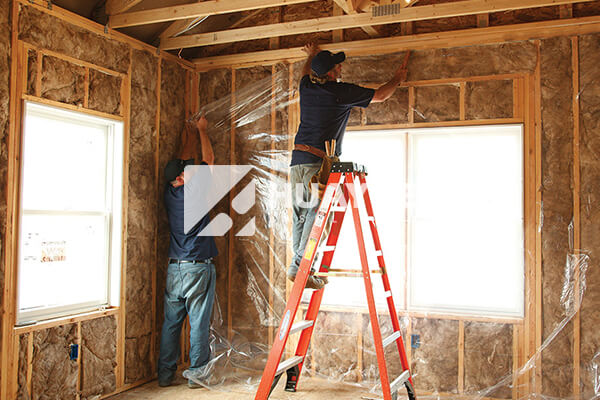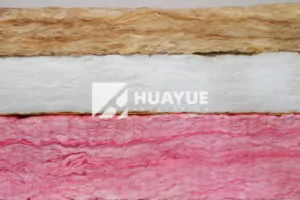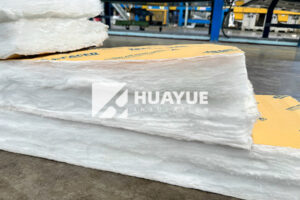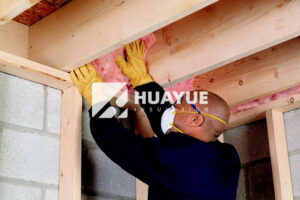What Should You Know Before Using Glass Wool Insulation in Your Home?
Using glass wool insulation can transform your home’s comfort while protecting your investment, but missing small details might cause unwanted issues down the line.
To use glass wool insulation safely and effectively, remember its benefits—mold resistance, non-combustibility, thermal, and acoustic performance—while also considering installation safety and proper handling of its fibers.

Glass wool insulation has been chosen by many for decades, known for its adaptability and performance. As someone who has worked in the insulation industry for years, I find that the right insulation makes all the difference. But like any building material, you need to look at its full range of properties and installation requirements to make the best choice for your needs. Now, let’s break down the major factors you should consider before using glass wool in your home.
What Makes Glass Wool a Good Choice for Thermal Insulation?
Glass wool fights heat loss, keeps energy bills low, and makes your living space more comfortable day and night.
Glass wool is manufactured from recycled glass and soda ash, forming a highly effective barrier against heat transfer that works in floors, roofs, walls, ceilings, and pipes to reduce thermal losses.

When I recommend glass wool to clients, I highlight its ability to slow down heat movement thanks to its dense, interwoven fiber structure. This means less energy wasted from heating or cooling, and a more consistent room temperature throughout the year. The typical thermal conductivity of glass wool is about 0.03 W/m·K.
Here’s a simple table illustrating where glass wool can be applied and the benefits in each case:
| Application Area | Role of Glass Wool | Result for Homeowner |
|---|---|---|
| Roofs | Prevents summer heat gain | Lower air conditioning costs |
| Walls (interior/exterior) | Minimizes heat transfer | Consistent comfort |
| Floors and crawl spaces | Reduces heat loss | Warm floors in winter |
| Pipes and ductwork | Maintains hot water temperature | More efficient heating |
Glass wool stands out for its fire resistance, too. In my experience, its A1 Euroclass rating means that it won’t add fuel to a fire, buying vital time for evacuation and reducing property damage. But it is always important to check that it is installed correctly—air gaps or compression can lower its efficiency significantly.
How Well Does Glass Wool Block Noise in the Home?
Unwanted noise can make even the best-designed home uncomfortable and hard to relax in.
Glass wool’s fiber structure traps and absorbs sound, giving a quieter, more peaceful environment by reducing airborne noise between rooms or from outside.

Sound insulation is too often ignored during home construction. But as someone who values peace and quiet, I know that glass wool can make a real difference in daily life, especially in busy neighborhoods or homes with open layouts.
The fibers inside glass wool break up sound waves, reducing their energy and making rooms less echo-prone. It is available in batts or rolls, making it easy to fit wall cavities, ceilings, and even around pipes. Workers often compress these batts during transportation, but it is important to let them fluff back to their original thickness to guarantee maximum sound insulation.
Let’s compare glass wool and fiberglass for both thermal and acoustic insulation:
| Attribute | Glass Wool | Fiberglass |
|---|---|---|
| Sound Absorption | Excellent | Good |
| Water Resistance | High | Medium |
| Longevity | Long-lasting | Average |
| Installation Ease | Easy, but needs protection | Easy, but can sag over time |
Despite being a little more costly, glass wool often outperforms fiberglass, especially when it comes to damp resistance and keeping that performance over many years.
Is Glass Wool Safe and Non-Combustible?
Home safety relies on more than just strong doors and windows.
Glass wool is non-combustible, which means it will not ignite or produce toxic smoke, making it an important product for fire safety in any structure.
To explain, the Euroclass Reaction to Fire Classification System awards glass wool an A1 rating. This means it neither adds to a fire’s spread nor generates smoke, blocking dangerous fumes that could threaten lives in an emergency. I always remind my customers that fire safety doesn’t get enough attention—choosing non-combustible insulation is a simple way to increase peace of mind.
Here’s a quick comparison table for fire safety between insulation types:
| Material | Combustibility Rating | Smoke Production |
|---|---|---|
| Glass Wool | A1 (non-combustible) | None |
| Rock Wool | A1 (non-combustible) | None |
| Foam Board | B–E class (combustible) | Can be high |
While glass wool is not as heavy-duty as rock wool in some cases, it’s much more adaptable, easy to cut, and can fit odd spaces with common tools. When there are bushfire risks, or you just care about fire safety, installing glass wool in the right places matters.
Can Glass Wool Cause Discomfort or Skin Irritation?
Some people worry about handling glass wool because of itching or minor irritation.
If not handled carefully, fibers from glass wool can cause temporary skin irritation, but wearing gloves and protective clothing during installation helps avoid these issues.
I have worked with glass wool many times, and those tiny fibers can get into your skin, causing mild itchiness or rash, especially if you work without gloves or long sleeves. Thankfully, these effects rarely last. The fibers don’t stay in the skin for long, and over-the-counter creams calm irritation fast.
Here are my safety tips, based on years in the industry:
| Action | Benefit |
|---|---|
| Wear gloves/sleeves | Keeps fibers off skin |
| Use goggles/mask | Stops fibers getting in eyes/lungs |
| Clean up after work | Reduces ongoing exposure |
| Avoid rough fabric | Prevents further skin irritation |
When installation is finished, glass wool sits safely behind walls or ceilings, away from daily contact. In most homes, there’s no ongoing risk to residents, even young children or pets.
Conclusion
Glass wool is a great choice for home insulation—safe, energy-saving, and adaptable—but knowing how to use it correctly helps you get the best results for years to come.
You may also be interested in:
Ready to Get Started?
Get in touch with our experts for personalized solutions tailored to your needs.
Get Free QuoteLatest Articles

Eco Batt Insulation: What You Need to Know?
Dec 12, 2025
Let's Work Together
Ready to take your business to the next level? Get in touch with our team of experts and let's discuss how we can help you achieve your goals.
Get Free Solutions






